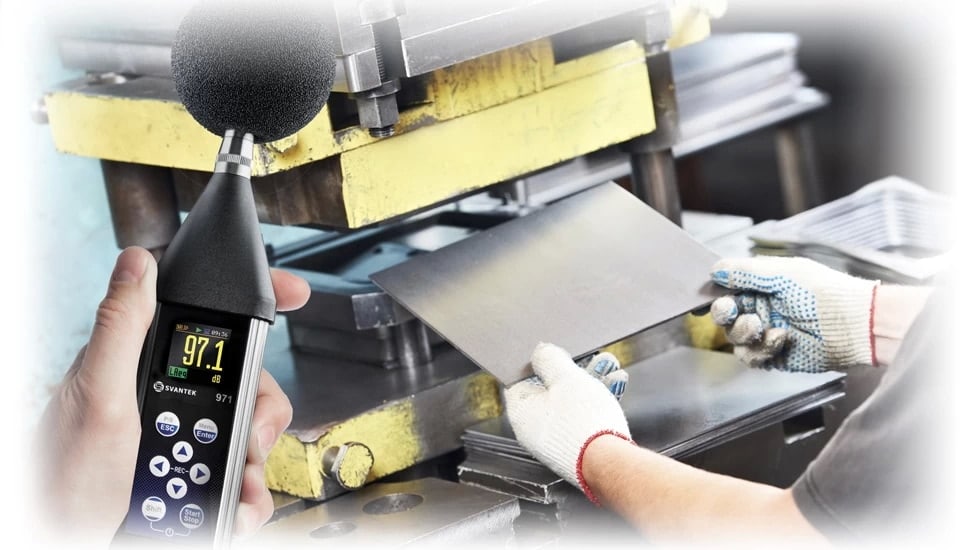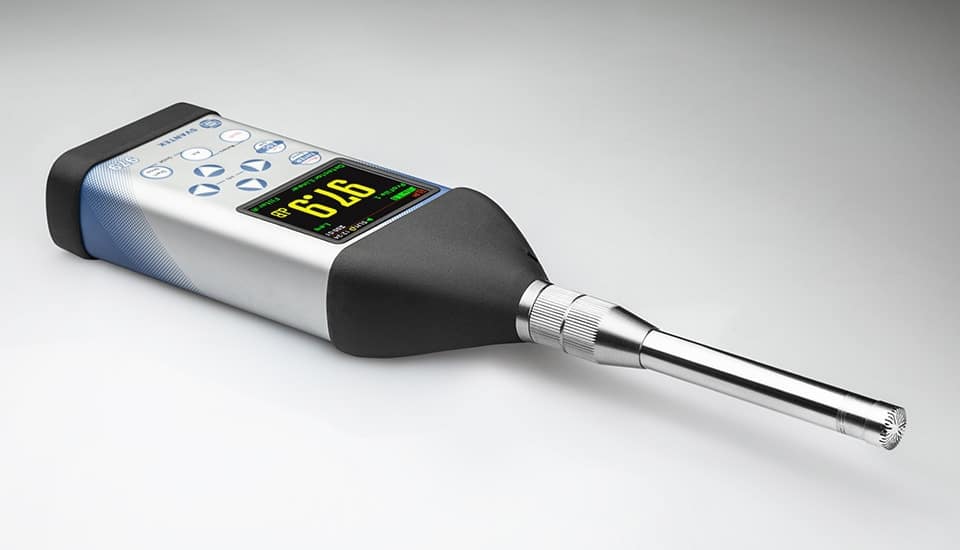Impulse noise according to ISO 1996-1:2006 is a sound characterized by sudden, short-lived spikes in sound pressure.
Impulse noise is characterized by sounds of short duration and rapidly increasing sound pressure. According to ISO 1996-1:2006, it is “a sound characterized by sudden, short-duration spikes in sound pressure (the duration of a single impulse sound is usually less than 1 second).” To measure impulse noise, it is crucial to record the sound signal with a step of no more than 50 ms and record the audio signal for analysis. Impulse noise is most often generated by gunshots, explosions or impacts.
Impulse noise can be analyzed as industrial noise. The assumptions of the ISO 10843:2002 standard “Acoustics. Methods for the description and measurement of single pulses or series of pulses” can be applied. Measurement of impulse noise is not simple, because there is a need to capture the individual pulse to get a good picture of the nature of the sound. In addition, when measuring impulse noise, the measurement equipment must be properly adjusted to the existing impulse. Pulses that are too loud can overload the meter input or, in the worst case, damage the microphone.


The location of measurement points for industrial and impulse noise are the same. However, in the case of impulse noise, it is worth noting the time for the sound to reach the measurement microphone. In order to unambiguously identify pulses measured with pulses generated by the source, one measurement point can be located close to the noise source.
For class one meters, the requirements specified in IEC 61672-1 “Electroacoustics – Sound level meters – Part 1: Requirements” are sufficient for impulse noise measurements. In addition, consider extending the dynamic range of the meter if the pulses are characterized by high energy. It is crucial to set an appropriate time constant in the meter. Meters also allow the measurement to be triggered by appropriate signals. If you are guided by the meter specifications, for short pulses the size of the microphone diaphragm will be of great importance. The smaller the diaphragm, the faster it will respond to the incoming pulse. You should also consider measuring impulse noise over a wider range than audible sounds.

Measurement of impulse noise should be carried out in accordance with the procedure described in ISO 10843 “Acoustics – Methods for describing and measuring single impulses or series of impulses”. It is important to distinguish the characteristics of impulse noise. If individual pulses are identifiable and it is possible to measure them separately then the value of exposure levels for each pulse should be measured. However, if the pulses are not separate events it is necessary to determine the equivalent sound level and correct it for the value of background noise. Ultimately, the effect of background noise on the obtained measurement results should be minimized. The distance between the background noise and the measured impulse noise should be at least 10 dB. If it is impossible to meet this condition, appropriate corrections for background noise should be applied. Appropriate corrections are added to the measured values due to the high annoyance of impulse noise.
The regulation defines 3 types of impulsive noise. The first is a high-impulse sound, e.g. gunshots, the second is a high-energy impulse sound, e.g. rockets, artillery shells, and the third is a typical impulse sound, e.g. slamming doors, ball games or church bells. The impulse correction for each of these sounds varies. It also varies depending on the measured parameters – exposure sound levels or equivalent sound levels.

A high-energy impulse sound is a sound from an explosion that corresponds to a TNT explosion weighing more than 50 grams. Such sounds include explosions in quarries, shock waves from aircraft or rockets, demolition or military combat equipment. High-pulse sound is characterized by a high degree of annoyance. Examples of this kind of sound include gunshots, hammering of metal or wood, falling hammer, etc. The third type of impulse noise, or typical impulse sound, is all other impulse noises that cannot be included in the other two categories.
Three acoustic indicators are used to assess impulse noise. These are the sound exposure level, the maximum sound level and the peak sound level. Based on these acoustic parameters and spectrum evaluation, the nature of impulse noise can be determined.
The local regulation defines two impulse corrections for each type of sound. For example, in Poland the first is for measuring exposure sound levels for single impulses, and the second is for measuring equivalent impulse sound levels. For high-impulse sound they are 12 dB and 11.7 dB, respectively, for high-energy impulse sound: for both levels 12 dB, while for typical impulse sound they are 5 dB and 3 dB.

One special case of impulse noise measurement is the measurement of noise generated at a sports shooting range. In the first step, it is necessary to determine the noise exposure levels and determine the correction related to background noise. Based on the results of the average exposure value and the equivalent level, it is possible to draw conclusions from the measurements.
Noise generated by gyms and fitness clubs has a variety of sources, including low-frequency and impulse noise from throwing weights, machine operation, instructors’ voices, shouting and loud music. This noise can enter neighboring premises through air and materials, making it a nuisance to residents. Due to the long opening hours of these facilities, the noise can affect the comfort of the neighborhood for most of the day.
